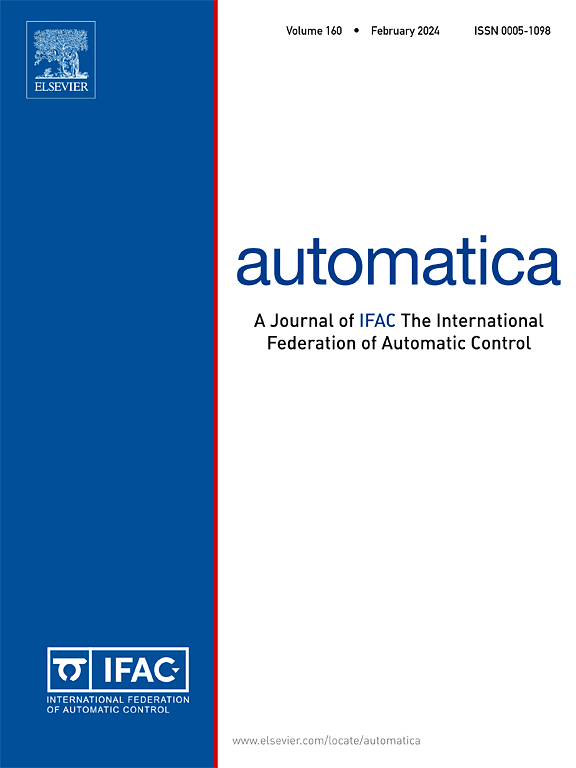A high performance globally exponentially convergent sensorless observer for the IPMSM: Theoretical and experimental results
IF 4.8
2区 计算机科学
Q1 AUTOMATION & CONTROL SYSTEMS
引用次数: 0
Abstract
In a recent paper (Ortega et al., 2021) the authors proposed the first solution to the problem of designing a globally exponentially stable (GES) flux observer for the interior permanent magnet synchronous motor. However, the establishment of the stability proof relies on the assumption that the adaptation gain is sufficiently small—a condition that may degrade the quality of the transient behavior. In this paper we propose a new globally exponentially convergent flux observer that mitigates this limitation ensuring a high performance behavior under an operating constraint of motor currents. The design relies on the use of a novel theoretical tool—the generation of a “virtual” invariant manifold—that allows the use of the more advanced Kreisselmeier’s regression extension estimator, instead of a simple gradient descent one. We illustrate its superior transient behavior via extensive simulations and experiments.
求助全文
约1分钟内获得全文
求助全文
来源期刊

Automatica
工程技术-工程:电子与电气
CiteScore
10.70
自引率
7.80%
发文量
617
审稿时长
5 months
期刊介绍:
Automatica is a leading archival publication in the field of systems and control. The field encompasses today a broad set of areas and topics, and is thriving not only within itself but also in terms of its impact on other fields, such as communications, computers, biology, energy and economics. Since its inception in 1963, Automatica has kept abreast with the evolution of the field over the years, and has emerged as a leading publication driving the trends in the field.
After being founded in 1963, Automatica became a journal of the International Federation of Automatic Control (IFAC) in 1969. It features a characteristic blend of theoretical and applied papers of archival, lasting value, reporting cutting edge research results by authors across the globe. It features articles in distinct categories, including regular, brief and survey papers, technical communiqués, correspondence items, as well as reviews on published books of interest to the readership. It occasionally publishes special issues on emerging new topics or established mature topics of interest to a broad audience.
Automatica solicits original high-quality contributions in all the categories listed above, and in all areas of systems and control interpreted in a broad sense and evolving constantly. They may be submitted directly to a subject editor or to the Editor-in-Chief if not sure about the subject area. Editorial procedures in place assure careful, fair, and prompt handling of all submitted articles. Accepted papers appear in the journal in the shortest time feasible given production time constraints.
 求助内容:
求助内容: 应助结果提醒方式:
应助结果提醒方式:


